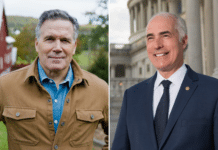(Center of the American Experiment) — Over the last two years, several Minnesota cities, including Minneapolis, St. Paul, Edina, Northfield, and many others, have promoted an initiative called “No Mow May,” where residents do not mow their lawns in May in order to provide more flowers for bees.
The only problem? A study supporting this eco-fad was retracted last fall for shoddy scholarship, calling into question whether these municipalities should follow the science and walk back their enthusiasm for wild lawns.
In late 2022, a 2020 study conducted by Lawrence University in Appleton, Wisconsin, which purported to have found benefits to No Mow May was retracted.
“After finding several potential inconsistencies in data handling and reporting, the authors and editorial team have agreed to retract this article with the opportunity for re-evaluation should the authors choose to submit a new version.”
An article in Medium by a bee scientist at the University of Minnesota elaborates on the scientific shortcomings of the study. One shortcoming was that, according to the author, the paper reported multiple bee species that simply do not occur in Wisconsin in May.
Another shortcoming was the paper methods state that the majority of specimens were identified by sight in the field. This is a problem because many of the listed species require a microscope to identify.
These flaws may not be obvious to casual readers, but they should have been obvious for an academic journal that supposedly subjected the paper to peer review.
Given the fact that the study supporting No Mow May was retracted, why are cities still advocating for their residents to participate in the eco-fad? If they were truly interested in “following the science,” they would acknowledge the study was retracted and advise their residents accordingly.


















